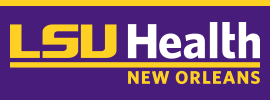Recreational And Occupational Physical Activity In Relation To Prostate Cancer Aggressiveness: The North Carolina-louisiana Prostate Cancer Project (pcap)
Document Type
Article
Publication Date
3-1-2022
Publication Title
Cancer Causes and Control
Abstract
Purpose: To examine associations between recreational and occupational physical activity and prostate cancer aggressiveness in a population-based, case-only, incident prostate cancer study. Methods: Data were analyzed from the cross-sectional North Carolina-Louisiana Prostate Cancer Project of African-American (n = 1,023) and European-American (n = 1,079) men newly diagnosed with prostate cancer (CaP). High-aggressive CaP was defined as Gleason sum ≥ 8, or prostate-specific antigen > 20 ng/ml, or Gleason sum ≥ 7 and clinical stage T3–T4. Metabolic equivalent tasks (MET) were estimated from self-reported recreational physical activity in the year prior to diagnosis assessed retrospectively via a validated questionnaire and from occupational physical activity based on job titles. Associations between physical activity variables and high-aggressive prostate cancer were estimated using logistic regression to calculate odds ratios (ORs) and 95% confidence intervals (CIs), adjusting for multiple confounders. Results: There was suggestive evidence that walking for 75–150 min/week for exercise is associated with lower odds of high-aggressive prostate cancer compared to no walking (OR = 0.69, 95% CI 0.47–1.01). Physical activity at the current job was associated with 24% lower odds of high-aggressive prostate cancer (highest vs. lowest tertile OR = 0.76, 95% CI 0.56–1.04). However, total MET-h/week of recreational physical activity and accumulation of high-level physical activity at the longest-held job were not associated with high-aggressive prostate cancer. Results did not vary by race. Conclusions: The odds of high-aggressive prostate cancer were lower among men who walk for exercise and those engaged in occupations with high activity levels.
First Page
875
Last Page
887
PubMed ID
35320830
Volume
33
Issue
6
Recommended Citation
Steck, Susan E.; Su, L. Joseph; Antwi, Samuel O.; Morris, Bonny B.; Crawford, Brittany; Adams, Swann Arp; Hebert, James R.; Fontham, Elizabeth T.H.; Bensen, Jeannette T.; Mohler, James L.; and Arab, Lenore, "Recreational And Occupational Physical Activity In Relation To Prostate Cancer Aggressiveness: The North Carolina-louisiana Prostate Cancer Project (pcap)" (2022). School of Public Health Faculty Publications. 119.
https://digitalscholar.lsuhsc.edu/soph_facpubs/119
10.1007/s10552-022-01572-z


